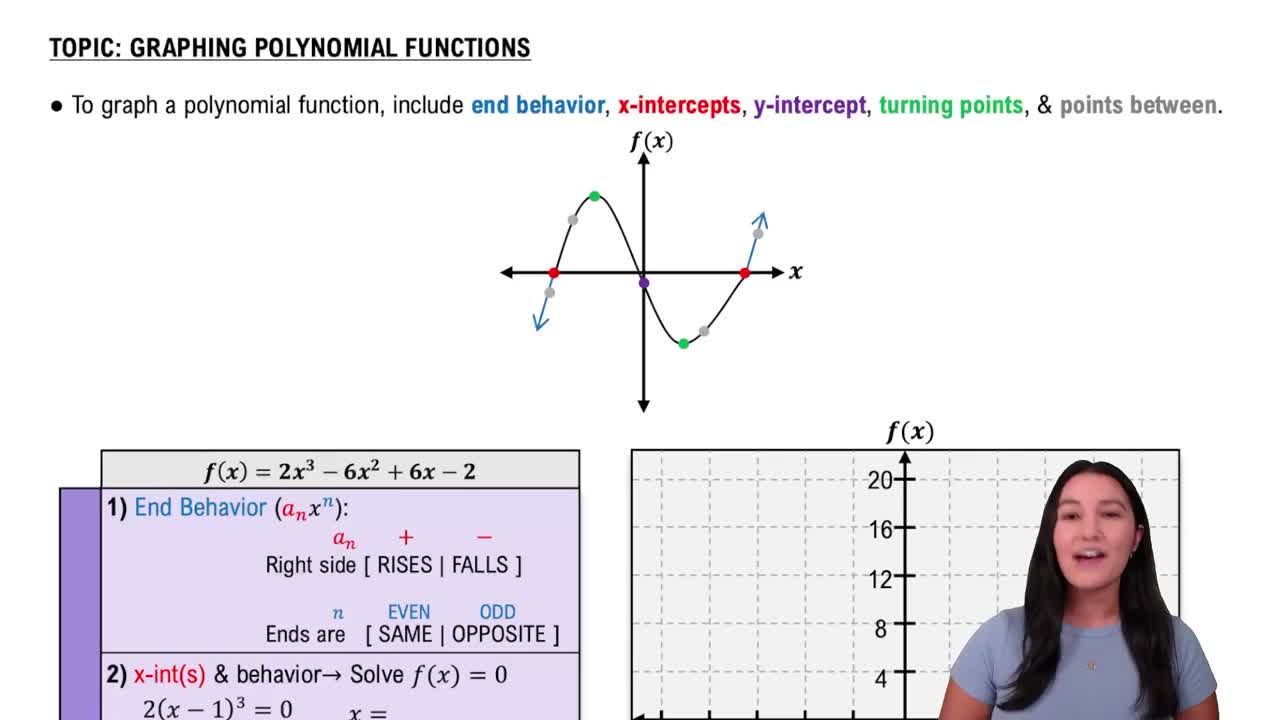Here are the essential concepts you must grasp in order to answer the question correctly.
Remainder Theorem
The Remainder Theorem states that when a polynomial f(x) is divided by a linear divisor of the form x - k, the remainder of this division is equal to f(k). This theorem simplifies the process of evaluating polynomials at specific points, as it allows us to find the value of the polynomial at k without performing long division.
Recommended video:
Polynomial Functions
A polynomial function is a mathematical expression involving a sum of powers in one or more variables multiplied by coefficients. In this case, the polynomial f(x) = x^3 - 2x^2 - x + 2 is a cubic polynomial, which means its highest degree is three. Understanding the structure of polynomial functions is essential for applying the Remainder Theorem effectively.
Recommended video:
Introduction to Polynomial Functions
Graphing Polynomial Functions
Graphing polynomial functions involves plotting points on a coordinate plane to visualize the behavior of the function. The coordinates of points on the graph correspond to the values of the polynomial at specific x-values. By using the Remainder Theorem to find f(1), we can determine the y-coordinate of the point on the graph where x equals 1, thus providing insight into the function's behavior at that point.
Recommended video:
Graphing Polynomial Functions
 Verified step by step guidance
Verified step by step guidance Verified video answer for a similar problem:
Verified video answer for a similar problem:

